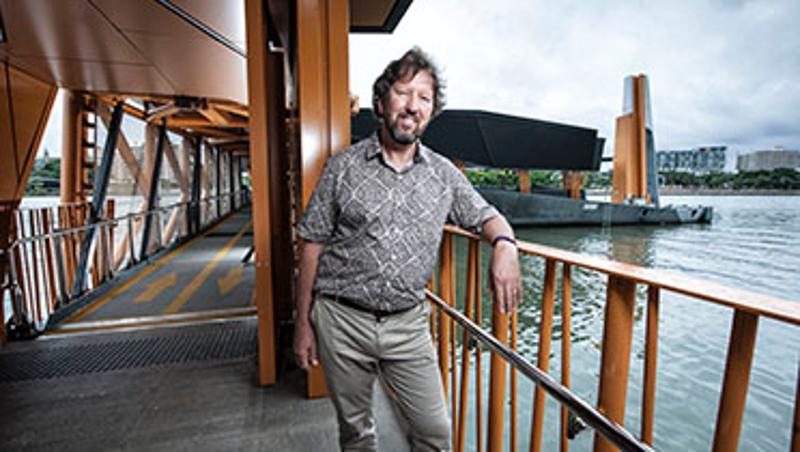
Houses that float up and down on their extended stumps, cars that lock 50m from an overflowing creek, transport networks well away from at-risk areas – just some of the ideas canvassed at the Flood Hypothetical at QUT on Thursday, February 4 to help save lives and property from rising floodwaters.
Flood Hypothetical organiser Dr Piet Filet, from QUT Business School, said a suite of planning experts from local and state governments, emergency services, utilities, as well as consultants, insurers, and researchers would share their views and plans for the next 20 years that are needed to prepare Brisbane for floods on the scale of 2011.
“Let’s face it: Brisbane is on a floodplain so it’s always exposed to floods. An extreme scenario would be to move Brisbane. That’s not feasible so we must adapt and build resilience to floods,” Dr Filet said.
“One simple social issue we can all do at the local level is acknowledge and accept that we live at risk of flooding like many major cities built alongside a river.
“The Brisbane River catchment has 48,000kms of rivers and creeks that collect and funnel the flow through greater Brisbane and right past the CBD.”
Dr Filet said Hypothetical experts would look at measures we, as individuals, could do and what needed city-wide planning.
“The Brisbane City Council provides information and estimates of creek and river flood risk for different parts of Brisbane,” he said.
“We can use that information to design houses better adapted to floods and in extreme cases renovate lower parts of a house with water-tolerant building materials and smart flow-through design.
“We can use GPS and apps to warn and protect us from rising flood waters such as a system to stop vehicles from even nearing swollen rivers.
“QUT’s Professor Axel Bruns will discuss the novel ways people helped each other through social media in the last floods and how we could improve and use it in different ways to help us cope during floods.”
Dr Filet said these measures could help against localised flooding but for inundation by the Brisbane River more thinking on protection and adaption was required.
“For that, we need big picture thinking and a range of measures which is where our city planners and other experts at the Hypothetical come in,” he said.
“For example, we need to consider investing in revegetation of upper catchment riparian zones that would slow the water flow from the Upper Brisbane, Bremer and Lockyer creeks – and we can’t ask landowners to bear all the cost, it must be shared with their downstream cousins.
“We can look at ways to store the water through swales and
ponds for local flood events but the sheer volume of water in peak floods means it’s impossible to store it.
“We must design future transport networks that do not exacerbate floods and are out of harm’s way and adapt buildings so their essential services are on higher levels.”
The Flood Hypothetical is already full booked but there will be live streaming of the event at - https://www.qut.edu.au/live-streaming?stream=QUTStream2
QUT is one of five Australian universities that have come together to form the Australian Technology Network of Universities (ATN).
Media contact: Niki Widdowson, QUT Media, 07 3138 2999 or n.widdowson@qut.edu.au
After hours: 0407 585 901 or media@qut.edu.au


